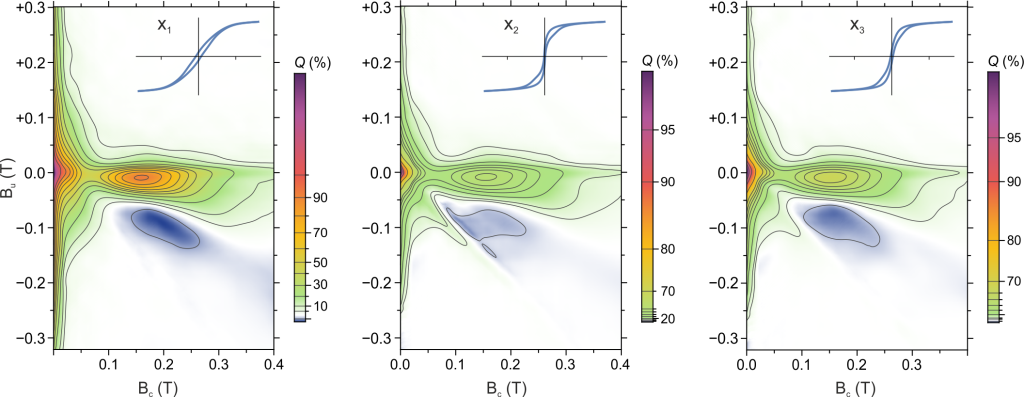Rocks containing iron oxides can preserve a magnetic record of the Earth’s magnetic field history, the age of the rock, and the processes that have affected it. The magnetic properties of these rocks provide information about the composition, size, shape, and arrangement of the oxides. Often, many of these parameters are measured in only one direction and are assumed to be directionally independent (isotropy). In collaboration with scientists from Austria and Germany, our colleagues have described a significant change in the magnetic properties of massive natural hematite ore sample due to torsional deformation. This deformation process converted a portion of the magnetically hard hematite into magnetically soft, ultrafine magnetite particles. This transformation is accompanied by pronounced magnetic anisotropy, meaning the properties depend on the direction of measurement. These results will impact the interpretation of the magnetic records of geological processes in hematite-bearing rocks.
The paper has been published in the prestigious Journal of Geophysical Research: Solid Earth.

FORC diagrams (coercivity spectra) and major hysteresis loops of deformed hematite sample measured in three perpendicular directions.

